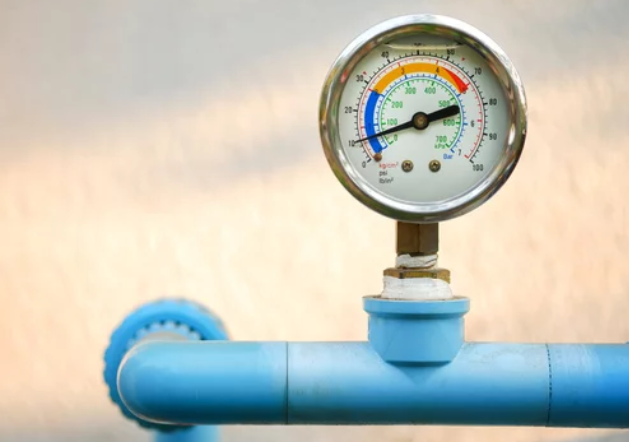Mechanical unit conversion plays a significant role in many engineering and scientific applications, from vehicle engines to industrial machinery. Three key concepts that engineers frequently deal with are torque, pressure, and force. Understanding how to convert units for these measurements is critical for ensuring accurate calculations and efficient designs. In this blog post, we’ll explore the basics of mechanical unit conversion for torque, pressure, and force, and demonstrate how these conversions are essential for a wide range of industries.

Check out our Types of Unit Converters
Torque: Definition and Conversion
Torque is the rotational equivalent of force and represents the twisting or turning force applied to an object. The most common units of torque include Newton-meters (Nm), foot-pounds (ft-lb), and inch-pounds (in-lb). Torque is fundamental in mechanical systems where rotation is involved, such as in engines, motors, and gear systems.
The formula to calculate torque is:
\[ \text{Torque} = \text{Force} \times \text{Distance} \]Where:
- Force is measured in Newtons (N) or pounds-force (lbf).
- Distance is the perpendicular distance from the axis of rotation, typically measured in meters (m) or feet (ft).
Common Torque Conversions
Newton-meters (Nm) to Foot-pounds (ft-lb):
\[ 1 \, \text{Nm} = 0.73756 \, \text{ft-lb} \]For example, if a motor produces 100 Nm of torque, converting to foot-pounds:
\[ 100 \, \text{Nm} \times 0.73756 = 73.76 \, \text{ft-lb} \]Foot-pounds (ft-lb) to Inch-pounds (in-lb):
\[ 1 \, \text{ft-lb} = 12 \, \text{in-lb} \]For instance, converting 50 ft-lb of torque into inch-pounds:
\[ 50 \, \text{ft-lb} \times 12 = 600 \, \text{in-lb} \]Newton-meters (Nm) to Inch-pounds (in-lb):
\[ 1 \, \text{Nm} = 8.8507 \, \text{in-lb} \]If an engine exerts 25 Nm of torque, converting to inch-pounds:
\[ 25 \, \text{Nm} \times 8.8507 = 221.27 \, \text{in-lb} \]Pressure: Definition and Conversion
Pressure is the force applied per unit area, often measured in Pascals (Pa), pounds per square inch (psi), or atmospheres (atm). It is essential in systems where fluids or gases are present, such as in hydraulics, pneumatics, or even weather forecasting.
The formula for pressure is:
\[ \text{Pressure} = \frac{\text{Force}}{\text{Area}} \]Where:
- Force is measured in Newtons (N) or pounds-force (lbf).
- Area is measured in square meters (m²) or square inches (in²).
Common Pressure Conversions
Pascals (Pa) to Pounds per Square Inch (psi):
\[ 1 \, \text{Pa} = 0.0001450377 \, \text{psi} \]If the pressure in a system is 200,000 Pa, converting to psi:
\[ 200,000 \, \text{Pa} \times 0.0001450377 = 29.01 \, \text{psi} \]Pounds per Square Inch (psi) to Pascals (Pa):
\[ 1 \, \text{psi} = 6,894.76 \, \text{Pa} \]For example, converting 50 psi into Pascals:
\[ 50 \, \text{psi} \times 6,894.76 = 344,738 \, \text{Pa} \]Atmospheres (atm) to Pascals (Pa):
\[ 1 \, \text{atm} = 101,325 \, \text{Pa} \]For instance, converting 2 atm to Pascals:
\[ 2 \, \text{atm} \times 101,325 = 202,650 \, \text{Pa} \]Pounds per Square Inch (psi) to Atmospheres (atm):
\[ 1 \, \text{psi} = 0.068046 \, \text{atm} \]For a tire pressure of 35 psi, converting to atmospheres:
\[ 35 \, \text{psi} \times 0.068046 = 2.38 \, \text{atm}Force: Definition and Conversion
Force is the push or pull exerted on an object and is fundamental in mechanics and engineering. The most common units for force are Newtons (N) and pounds-force (lbf).
The formula for force is derived from Newton’s second law of motion:
\[ \text{Force} = \text{Mass} \times \text{Acceleration} \]Where:
- Mass is measured in kilograms (kg) or pounds (lb).
- Acceleration is measured in meters per second squared (m/s²) or feet per second squared (ft/s²).
Common Force Conversions
Newtons (N) to Pounds-force (lbf):
\[ 1 \, \text{N} = 0.224809 \, \text{lbf} \]If a machine applies 500 N of force, converting to pounds-force:
\[ 500 \, \text{N} \times 0.224809 = 112.4 \, \text{lbf} \]Pounds-force (lbf) to Newtons (N):
\[ 1 \, \text{lbf} = 4.44822 \, \text{N} \]For example, converting 200 lbf to Newtons:
\[ 200 \, \text{lbf} \times 4.44822 = 889.64 \, \text{N} \]Kilonewtons (kN) to Pounds-force (lbf):
\[ 1 \, \text{kN} = 224.809 \, \text{lbf} \]If a structural beam is rated for 5 kN, converting to pounds-force:
\[ 5 \, \text{kN} \times 224.809 = 1,124.05 \, \text{lbf} \]Practical Applications of Mechanical Unit Converters
Understanding mechanical unit conversion is critical in many real-world scenarios:
- Automotive Engineering: Torque conversion helps determine the power output of engines, the performance of electric motors, and the force applied to wheels.
- Hydraulics: Pressure conversion is essential for designing hydraulic systems used in construction equipment, automotive brakes, and aircraft control systems.
- Structural Engineering: Force conversion is vital for calculating the load-bearing capacity of materials and the forces acting on bridges, buildings, and other structures.
- Manufacturing: In manufacturing, force and torque conversions ensure that machinery operates within safe parameters, preventing equipment failure and optimizing production processes.
- Aerospace: Pressure and force conversion play crucial roles in designing spacecraft, calculating atmospheric conditions, and ensuring safe flight operations.
Try out our Free Math and English Worksheet Generators
Mastering mechanical unit converters for torque, pressure, and force is essential for engineers, scientists, and technicians working in various industries. Whether you’re designing a car engine, analyzing the forces on a bridge, or troubleshooting hydraulic systems, understanding how to convert these mechanical units ensures accuracy and efficiency.